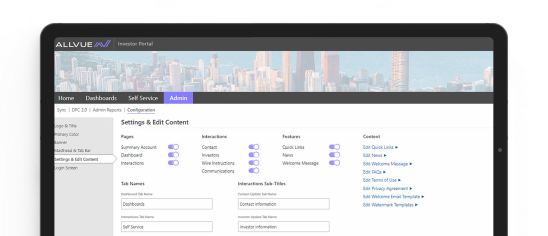
By: Allvue Team
March 12, 2024
The demand for private equity co-investments is growing, mainly because of increased transparency and a high return potential. Between 2010 and 2022, the total capital raised for co-investments increased from $4 billion to $10.3 billion, emphasizing the dramatic demand for these investment vehicles and their resilience during tough market conditions and periods of slow fundraising.
With such high demand, one could argue that co-investment private equity is changing the course of private capital investing as a whole. So, what’s driving this growth? And more importantly, how do co-investments work?
This article will shed some light on the opportunities available with PE co-investing.
The mechanics of co-investing
It may be unsurprising that co-investing is becoming popular. After all, co-investors can inject their capital directly into a deal without the pains of limited partnerships where investors have diminished control over investment decisions.
In a typical private equity co-investment, investors can inject capital into profitable assets alongside private equity fund managers. However, private equity firms typically open up these opportunities to large institutional investors with whom they have relationships.
Both parties stand to benefit from the success of the co-investment with the private equity firm adding an asset to its portfolio while the co-investor shares in the profit gained from the opportunity. Notably, private equity firms handpick individual investments, providing co-investors with greater visibility into what each deal might look like in the long term.
Let’s break down the mechanics of co-investing:
Due diligence
Although a co-investing partnership might appear less risky from the outset, both parties must conduct their due diligence on the terms of the deal. Since it’s the private equity firm bringing in a co-investor to the opportunity, the co-investor should evaluate the benefits of pursuing the opportunity and the level of risk the co-investment poses to their capital.
In particular, co-investors should assess whether there’s sufficient fee transparency and they won’t be assessed hidden costs midway into the deal. Depending on the complexity of the deal at hand, it helps co-investors (or limited partners) to have an expert review the legalities of the co-investing agreement before accepting it.
In many cases, private equity firms do their due diligence on each deal prior to bringing in a co-investor, which does, in theory, reduce the overall risk of investing for the co-investor.
Deal sourcing
As with other private capital investments, co-investing requires general partners (GPs) to identify potential opportunities worth pursuing. In many instances, the deals offered to LPs as co-investments tend to require much more capital, which means a fair amount of deal sourcing goes into securing them.
As such, GPs and LPs may have to invest in relationship building so they can keep connected to information about new investment opportunities. Furthermore, investors will likely have to conduct extensive research to understand the type of asset or company they are investing in and its growth potential.
Partnership structures
Ideally, GPs and LPs should agree on co-investment partnership structures early on to prevent any issues down the line. With so much capital involved in these investments, LPs must understand the limitations to participating in the co-investment, such as when they can withdraw funds from an investment or the terms for a payout following a buyout or IPO.
Murky partnership structures can result in legal issues if disputes about equity and asset ownership arise long after the co-investment relationship is established. Depending on how many LPs are involved in a co-investment, it’s worthwhile to clearly and explicitly define partnership structures for these deals.

The key players
General partners (GPs) and limited partners (LPs) are the main players in the co-investment space. In general, GPs offer the opportunity to co-invest in an asset to LPs, who then benefit from providing capital to fund a promising business venture.
Naturally, the GPs primarily drive the co-investment deal and largely involve the LPs as a source of supplementary capital to fund the private equity investment. However, LPs are not expected to take a back seat throughout the co-investment and can participate in processes like choosing how funds are invested during the deal.
Co-investment strategies
Most of the co-investment strategies involve significant relationship-building and nurturing to enable long-term collaboration between GPs at private equity firms and the LPs they invite to co-invest in various opportunities. That said, there are some notable strategies worth knowing.
Fee-free co-investments
During periods of limited fundraising, GPs may reach out to LPs to invite them to co-investing arrangements as strategic partners, offering them the option to invest without fees. Such strategies can deepen these relationships and maintain the flow of capital to investments.
Increased transparency
As GPs maintain good relationships with LPs, transparency remains crucial, especially when making decisions about investments. With increasing regulatory and market uncertainty, GPs at private equity firms are more inclined to nurture relationships with LPs so they can raise capital amidst this uncertainty.
Benefits of co-investing
Co-investing provides various benefits for investors:
Risk mitigation
Co-investment opportunities lower the risk of LPs losing money through widespread fund-of-fund investments. By co-investing with reputable private equity firms, LPs are more likely to control the risk of losses since the GP drives most of the deal sourcing and due diligence to de-risk the investment.
The co-investment space also gives investors more control over investment decision-making, which can lower risk to a certain extent and increase their involvement in determining an asset’s growth.
Enhanced returns
By opening up opportunities for LPs to invest in lucrative deals, GPs can increase the capital they invest in these companies, boosting profit margins. Ordinarily, GPs at private equity firms might face restrictions related to concentration limitations if only a single firm is investing.
Furthermore, co-investing creates more opportunities to invest in different markets or sectors, which expands the overall net return on various asset classes. On the private equity fund side, co-investments bring in additional capital for larger investments, strengthening a firm’s positioning when it makes the actual investment in a company.
Portfolio diversification
One of the main reasons private equity funds might open up an opportunity to co-investors is to avoid passing it up, especially when they have limited capital on hand. As more diverse deals come through their pipelines, private equity GPs can leverage co-investments to drive growth and expand their portfolios to new asset classes and markets altogether.
Tax optimization
Another benefit of co-investment arrangements is that investors can plan around tax-related concerns since they are provided extensive information when investing in an asset or company. Having this information ahead of time helps co-investors successfully plan for audits and reports and avoid surprises down the line.
Risks and challenges
Participation in co-investments requires LPs to remain fully aware of the risks of investing alongside private equity firms. Mostly, these are related to the specifics of each co-investment. Since LPs are invited into the investment opportunity during or after deal sourcing, it can be challenging to track the history and particulars of the deal outside of the GP’s transparency.
In many instances, LPs rely on the expertise and due diligence of the private equity firms offering the co-investment opportunity. If a deal is moving through the pipeline quickly, there will likely be insufficient time for an LP to conduct due diligence before deciding on the potential investment. Any gaps in deal sourcing and due diligence could then impact the investment later in its lifecycle.
There’s also heightened demand for specialized skills to effectively manage co-investments such that investors identify opportunities that are more likely to yield returns. GPs or LPs that have not yet adopted these skill sets internally may lack the expertise to compete favorably when sourcing deals and closing on them.
Since many are looking to eat a piece of the pie, this creates competition among investors—while reinforcing the need for GPs to nurture relationships with high-quality LPs.
How Allvue can support your co-investment strategy
As demand for co-investments grows, private equity firms must remain adaptable, building relationships with their limited partners to keep capital coming in to fund potential deals.
Successful co-investments require private equity fund managers to stay ahead of the competition by making decisions based on business intelligence and other data-driven tools that support quick turnarounds of investment decisions. Doing so would help identify high-value opportunities and position co-investors for rapid growth.
Allvue Systems has built a private equity software solution that helps investors manage their investments, source and execute deals effectively, and raise capital quickly. These tools are handy when streamlining the path to success for co-investment arrangements, as they automate cumbersome tasks and help GPs and LPs navigate complex transactions.
Contact Allvue Systems today to learn more about our products.
Sources:
Buyout Insider. Key Trends Driving the Growth of Co-Investment. https://www.buyoutsinsider.com/key-trends-driving-the-growth-of-co-investment/
Ernst & Young. Co-investment: A Promising Alternative to Traditional Private Equity Vehicles? https://www.ey.com/en_lu/private-equity/co-investment–a-promising-alternative-to-traditional-private-eq
Investopedia. Equity Co-Investment: Definition, How It Works, Benefits. https://www.investopedia.com/terms/e/equity-coinvestment.asp


